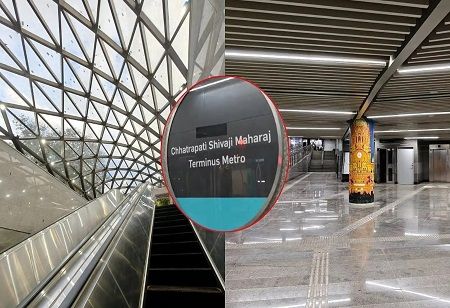
As Mumbai inches closer to the full commissioning of Metro Line 3 – the “Aqua Line” – its ripple effect on the city’s real estate market is already visible. Spanning 33.5 km as an underground corridor, the line is delivered in phases.
The first stretch, connecting Aarey Colony to BKC, followed by the BKC–Worli section, is already operational. The final 10.99 km phase from Worli to Cuffe Parade is set to be inaugurated by Hon’ble Prime Minister Shri Narendra Modi on October 08, 2025.
Once operational, the line will seamlessly link South Mumbai with key business districts and emerging suburban hubs, redefining connectivity for lakhs of Mumbaikars.
The metro is also changing the way families think about quality of life. Shraddha Kedia-Agarwal, Director, Transcon Developers observes, “Metro Line 3, along with western link corridors, is enabling families to select locations such as Santacruz, Andheri, and Malad not just for convenience but for a better lifestyle. We are seeing strong traction for projects that offer modern amenities, community spaces, and seamless connectivity — especially those close to metro stations.”
From an investor’s standpoint, Metro Line 3 is reshaping Mumbai’s real estate canvas. Ram Naik, Co-Founder & CEO, The Guardians Real Estate Advisory, notes, “By cutting down travel time, easing congestion and reducing commuting costs, the metro is helping households save more and improving quality of life. As city connectivity strengthens, we are observing increased investor interest in well-established corridors. The key will be identifying micro-markets where infrastructure readiness and developer execution align for sustainable growth.”
Also Read: 5 Gated Communities Offering Premium Amenities in India
The combined impact of Metro Line 3 and Dharavi Redevelopment is set to unlock unprecedented value in Mumbai’s central belt. Vikas Jain, CEO, Labdhi Lifestyle, explains “Dharavi’s transformation into a world-class urban hub, coupled with seamless metro connectivity, will have a spillover effect on adjoining areas like BKC, Mahim, and Sion. These locations are poised for a wave of residential, retail, and commercial redevelopment, driving up property values and attracting a new generation of homebuyers and businesses. The synergy between large-scale redevelopment and infrastructure projects will redefine Mumbai’s urban fabric in the coming decade.”
While optimism is high, experts caution that project delays, regulatory hurdles, and affordability concerns could temper the full benefits of Metro Line 3. They emphasize the need for last-mile connectivity, feeder services, and transit-oriented urban planning to maximize its long-term impact.
When Prime Minister Modi inaugurates the Worli–Cuffe Parade stretch, Mumbai’s real estate map will already be shifting. Metro Line 3 is no longer just a transport project — it is a catalyst for growth, reshaping neighborhoods, unlocking new investment corridors, and redefining what it means to live well in Mumbai.
Navin Makhija, Managing Director, The Wadhwa Group, remarked, “The inauguration of the Navi Mumbai International Airport marks a transformative moment for Navi Mumbai and the Panvel region. The region’s accessibility, connectivity from the main Mumbai city and infrastructure undertaken within the region has made it an ideal destination for large scale development and its growth is inevitable. We at The Wadhwa Group, have always believed in the region and we’re one of the first to undertake a large-scale township development which is just 10 to 15 mins from the new Navi Mumbai International Airport and 40 to 45 mins from the Main Mumbai City via Atal Setu. Once the airport is operational, we expect large scale social infrastructure projects to come to life, and also see a huge uptake in demand and price appreciation of 20 to 25 percent in the next 1 year for quality homes in the Panvel region.”
Ram Naik, Co-founder & CEO, The Guardians Real Estate Advisory, said, "The Navi Mumbai Airport is arguably the most transformative infrastructure development the MMR has witnessed in the past decade. While immediate appreciation will be visible in micro-markets such as Panvel, Ulwe, and Taloja, its long-term impact will extend across the entire region. The combination of MTHL, the Multimodal Corridor, and the expanding Metro network makes this a once-in-a-generation opportunity for both end-users and investors. We’re already witnessing renewed confidence from NRIs and institutional investors in the Navi Mumbai growth story."
Echoing similar optimism, Prashant Sharma, President, NAREDCO Maharashtra, emphasized that the airport will redefine urban growth patterns across the MMR. “This is not just about aviation—it’s about economic transformation. The Navi Mumbai Airport will generate employment, boost infrastructure, and attract investment across sectors. Developers and planners must ensure that this growth remains inclusive, with adequate focus on affordable, sustainable, and transit-oriented housing. The synergy between MTHL, Metro, and the airport will truly democratize Mumbai’s real estate market.”
We use cookies to ensure you get the best experience on our website. Read more...
Copyright © 2025 HomesIndiaMagazine. All Rights Reserved.